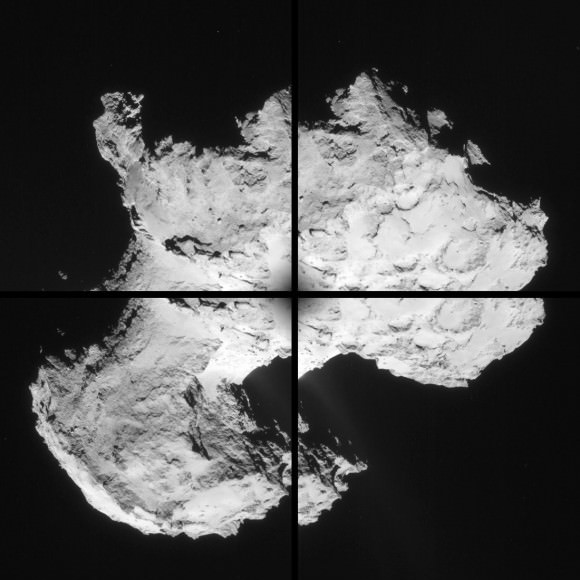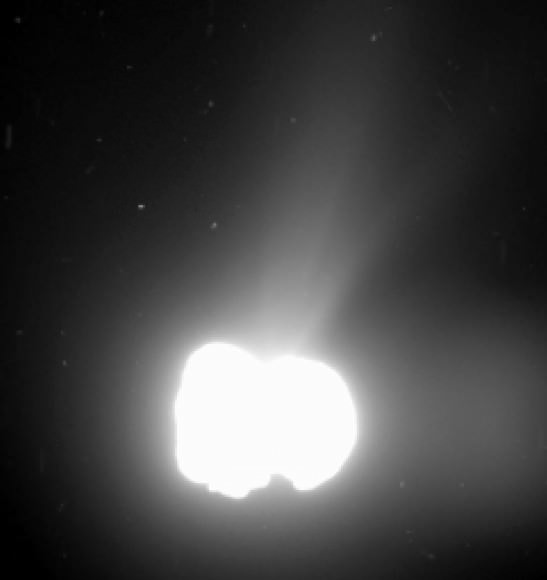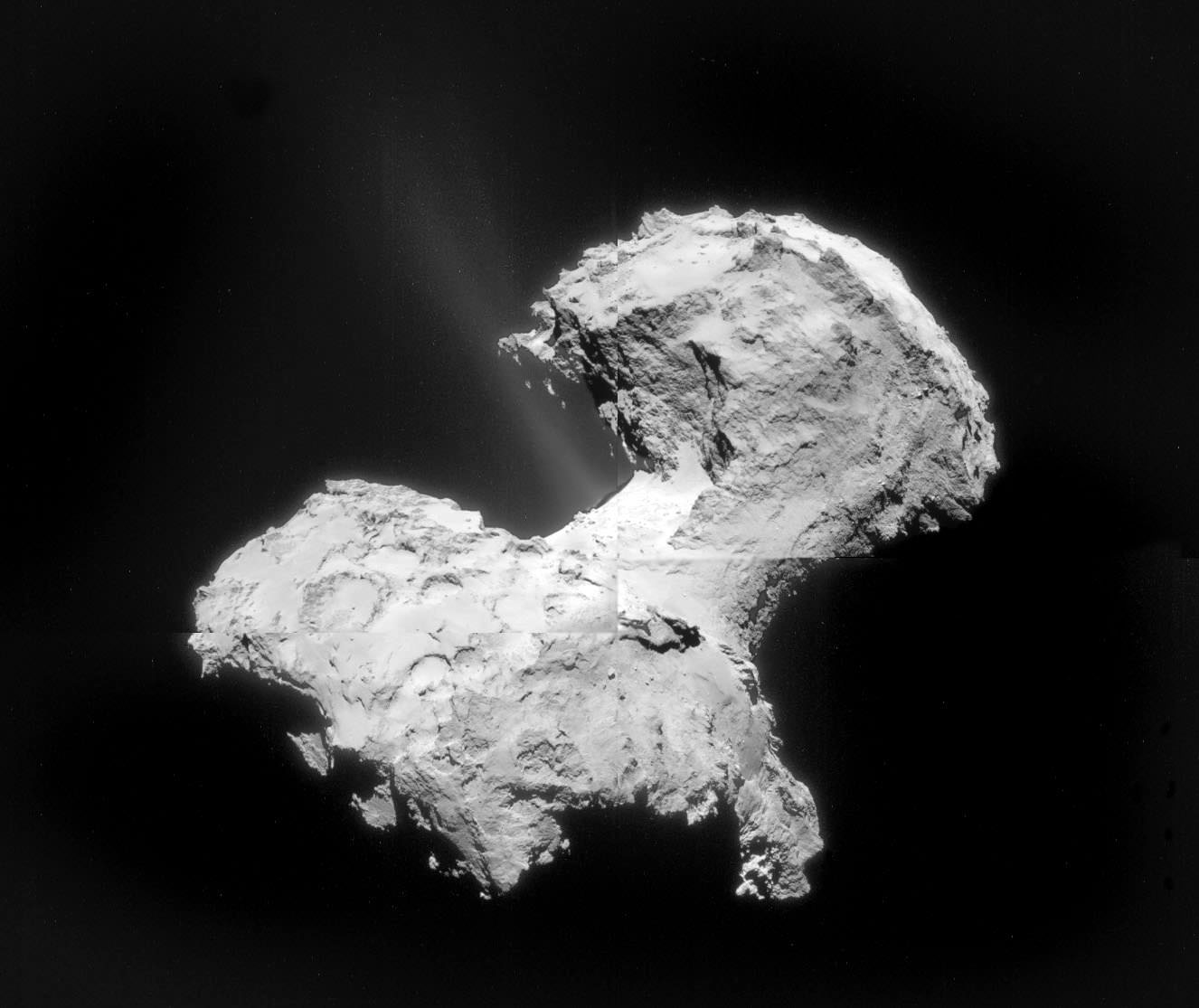Hidden among the four new images of Comet 67P/Churyumov-Gerasimenko released by ESA this week are a pair of dusty jets shooting from the nucleus of Comet Churyumov-Gerasimenko. The photos were taken September 2, 2014 and posted as a mosaic of four separate images. I re-assembled the four, albeit imperfectly, and added some additional contrast to better show the dual geyser of ice crystals mixed with dust venting from the nucleus.

An earlier Rosetta photo taken of Comet 67P/ Churyumov-Gerasimenko from a great distance and deliberately overexposed showed jets of dust-laden vapor shooting from the comet, but this is the first image I’m aware of that shows both the comet’s surface and its much fainter exhalations.
Jets or sprays of vaporizing ice are what gives a comet its lively appearance. Dust released with water vapor is ultimately pushed back by the pressure of sunlight to grow 67P/C-G’s dust tail. Ultraviolet light from the sun causes volatiles within the vapor to fluoresce a pale blue, creating a second ion or gas tail. The coma or comet atmosphere is a mix of both.

ESA / Rosetta / MPS for OSIRIS Team MPS / UPD / LAM / IAA / SSO / INTA / UPM / DASP / IDA
We can expect the jets to grow stronger and hopefully more numerous as 67P/C-G approaches perihelion in August 2015. Because the spacecraft is maneuvering into orbit between the comet and sun, we don’t get the best view of jetting activity. The comet nucleus, illuminated by sunlight, drowns out the fainter jets. Rosetta will make an excursion to the nightside on September 24. Assuming the jets remain active, we might see them backlit by the sun as bright beams extending from the darkened nucleus into space.


Good job! This is the first close up view of an out gassing event I’ve seen from Rosetta.. even before ESA’s Rosetta webpage! Nice… scooped em good!
Thanks Aqua. I can’t wait for more.
Oops!
Two days in a row now I am unable to read comments on this site.
The note says
“{ 1 comment… read it below or add one ”
But no comment is visible.
Wassup?
Appears that the jet stream does originate at the center of the comet, and the erosion has resulted in the center becoming much thinner. In an eon or two, it may split in two.
Thank You Bob. Just amazing what Rosetta has done so far and there’s more of a year of daily goodies to come. Arthur C Clarke would be proud.
So when do we start planning a human stay on the surface of 1P/Halley during the 2061 perihelion?
Wouldn’t that be just awesome?
“Jets”, “exhalations”, “venting” caused by vaporizing ice? Mechanism? This thing really looks like “dirty snowball”.
Again, why can’t I read the other comments?